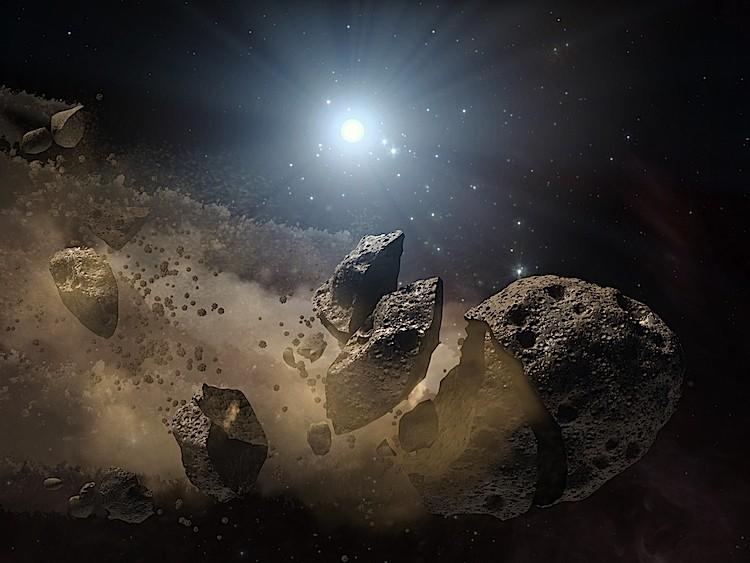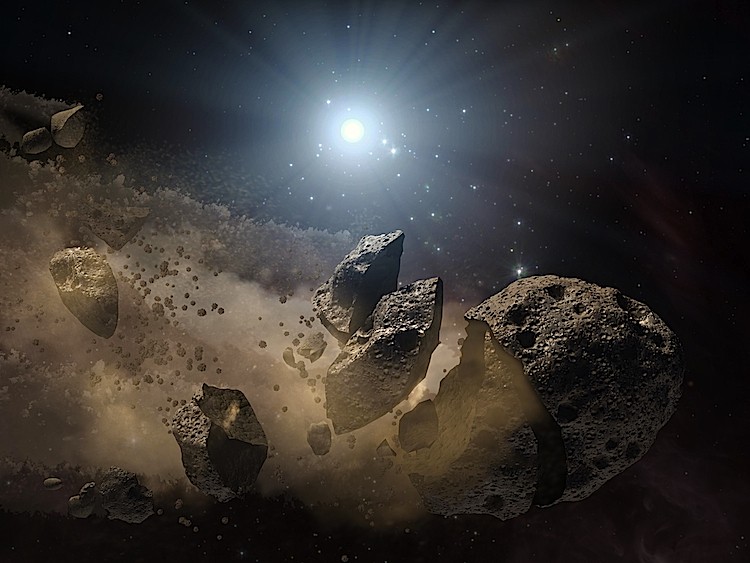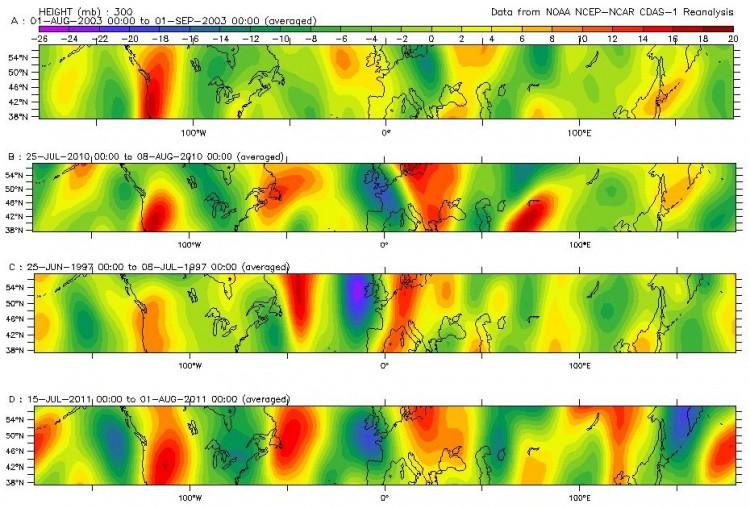Houston we have a problem. If we learn an asteroid the size of Texas is on a collision course with Earth, we shouldn’t turn to the action movie Armageddon for solutions, according to new research from England.
Four master’s degree candidates at the University of Leicester have shown that we do not have a bomb big enough to cleave an asteroid in half and save the planet like hero Harry Stamper did in the 1998 movie.
The students found that such a bomb would have to be about 1 billion times more powerful than the Tsar Bomba or “Big Ivan,” the Soviet Union’s 50 megaton hydrogen bomb—the biggest bomb ever detonated.
In one of two papers, the team determined the total amount of kinetic energy needed based on factors such as the asteroid’s velocity and distance from Earth at the point of detonation, and the volume of the asteroid pieces after detonation.
Their formula revealed that 800 trillion terajoules of energy would be required to split the asteroid so both pieces clear Earth. But “Big Ivan” only put out 418,000 terajoules.
The team also worked out that the cut-off point where the asteroid could be successfully split using a bomb the size of “Big Ivan” is about 8 billion miles away, which is approximately the distance that the Voyager spacecraft have now reached since launching in the 1970s.
“One possible alternative method would be moving the asteroid via propulsion methods attached to it,” said research co-author Ben Hall in a press release. “What is certain is that most methods would require very early detection of such an asteroid and very careful planning in deriving a solution.”
So, unfortunately, the Stamper drill-and-detonate technique just isn’t an option. In any case, the best satellite technology available in the 1990s—the Hubble Space Telescope—would not have been capable of detecting the asteroid, according to the other paper.
“I think that directors attempt to make films scientifically accurate, but find that a lot of trouble is run into in what can and cannot be done, thus leading to falsification in the science to make movies more interesting or visually appealing to the audience,” Hall said.
The papers appeared in the University of Leicester Journal of Special Physics Topics, which publishes papers by final-year students studying the four-year Master of Physics degree.
Read the papers at http://bit.ly/Te4LS8 and http://bit.ly/yw7iTI
The Epoch Times publishes in 35 countries and in 19 languages. Subscribe to our e-newsletter.




